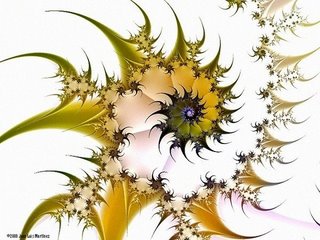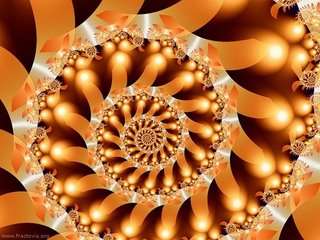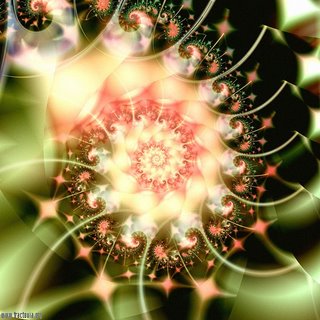Film Intro - The Cabinet of Dr. Caligari (1920)
Hi! I have created a website for Web Page Construction course, the link is at http://unix.rmit.edu.vn/~s3096072/part_3/php/home.php (you must be on campus to be able to access this site, sorry for this inconvenience). It is my personal portfolio which represents my design works and skills. You can find my biography, my gallery, a potted history of my work and a few other things that I hope may be of interest.
Well, I'm designing one. And I think you should have one also. Look at these portfolio sites. They are just great!
Click here to see the process of making an advertisement, kind of a collage, a mix of different things. You're gonna be stunned, I promise! ;-)
I have written about Neville Brody for my Research Paper assignment. I would love to hear what you think of it! :-)
 Neville Brody
Neville Brody
This piece was designed for Nike in 1988, which faithfully mirrors Brody’s powers of using design elements and structure, especially typography. It is kind of interesting to arrange the text in such a way that it floats all over the place, yet is still ‘readable’. Brody divides this piece neatly into two parts, one of which is an image and some text on it and the other is filled with types. Combined these strike an asymmetrical balance between a large image and several small graphics, which can bring about a dynamic emotional reaction. Five ‘justs’ plus a stunning close-up of a colored basketball player’s face inspire a sense of insecurity and desire.
It could be said that Brody’s use of whitespace is quite intelligent. His choice of font and his use of colors interact tremendously well with the background since there is a stark color contrast - black and white - in appearance, which creates intense excitement. The whole piece looks relatively simple, clear, yet impressive.
Poster for Graphic Arts Message (1992) Compared with the above magazine advertisement for Nike, this piece looks different in the way Brody uses typography. It is quite hard to recognize what the text is all about at the first glance. In fact, this text is comprised of three letters G, A, and M, which stand for ‘Graphic Arts Message’. By creating three different layers for three sets of letters and using colors (white, green and orange), he somehow creates a sense of ambiguity. On the other hand, his use of typography in this design is pretty extraordinary. Brody uses a black background with some blurry areas in it in order to emphasize the use of typography. It is not hard to notice that the way he arranges text in the majority of his designs is pretty the same. For example, in the previous advertisement and in this poster, Brody places the text in many directions and angles, which gives the audience an overall view of his design. That way of arrangement really plays an important role in creating positive effects on the viewers since it is likely that the observers will have certain whitespace to please their eyes. The text also gets a harmonious interaction with the background. Furthermore, ‘Graphic Arts Message’, ‘92’ and ‘TOKYO’ are organized very cleverly to evoke an asymmetrical balance in his design. Since the abbreviation ‘GAM’ causes the audience to read from top to bottom, it is really clever to set other smaller text ‘Graphic Arts Message’ and ‘TOKYO’ in the opposite direction. Brody also places the year ‘92’ in a nice position so that people could know the year in which the event was held. Since much of space is allocated to ‘GAM’, he has to save space by reducing the size of other text, yet it still conveys the meaning he intends to. Therefore, Brody reduces ‘1992’ to ‘92’.
Compared with the above magazine advertisement for Nike, this piece looks different in the way Brody uses typography. It is quite hard to recognize what the text is all about at the first glance. In fact, this text is comprised of three letters G, A, and M, which stand for ‘Graphic Arts Message’. By creating three different layers for three sets of letters and using colors (white, green and orange), he somehow creates a sense of ambiguity. On the other hand, his use of typography in this design is pretty extraordinary. Brody uses a black background with some blurry areas in it in order to emphasize the use of typography. It is not hard to notice that the way he arranges text in the majority of his designs is pretty the same. For example, in the previous advertisement and in this poster, Brody places the text in many directions and angles, which gives the audience an overall view of his design. That way of arrangement really plays an important role in creating positive effects on the viewers since it is likely that the observers will have certain whitespace to please their eyes. The text also gets a harmonious interaction with the background. Furthermore, ‘Graphic Arts Message’, ‘92’ and ‘TOKYO’ are organized very cleverly to evoke an asymmetrical balance in his design. Since the abbreviation ‘GAM’ causes the audience to read from top to bottom, it is really clever to set other smaller text ‘Graphic Arts Message’ and ‘TOKYO’ in the opposite direction. Brody also places the year ‘92’ in a nice position so that people could know the year in which the event was held. Since much of space is allocated to ‘GAM’, he has to save space by reducing the size of other text, yet it still conveys the meaning he intends to. Therefore, Brody reduces ‘1992’ to ‘92’.
Logo for FontFont (1990)

Actually, this design has interested me very much since the beginning, as it discloses the balance of using typography for the background, color, and font. In the background, the viewers can see clearly the FONT letters in both black and white models. Surely, it has a strong opposite of using the text up-side-down and gets balanced itself. Moreover, the colors of back and white can modify the equity in his design so one sinks into the dark black and red colors, and the other gets attention from the viewers at the same time. Indeed, the background by itself can show how nicely balanced each of his design has. It is the combination of both black and red letters mixing together into one form.
On the right side, the viewers will be amazed by his style of design. Unfortunately, this picture size is not large enough to give the viewers an overall insight of its meanings. By looking at the very first picture amongst the three, we could have a sense of how the text paragraphs work with the alternating background color. In most cases, the white text will always be clear when it goes with the black background. However, in this context, the black word was purposely mixed with the red background in order to make it quite impressive and interesting for the viewers.
The way he connects some angle shapes with the text paragraphs has engaged the audience in admiring his work. His ultimate purpose is to create a fine structure. In addition, his use of whitespace seems quite generous.
Throughout the three above specific designs, each of them illustrates some fascinating points about Brody’s use of typography. In the first design, Brody arranges the text in an interesting way which seems ambiguous to the audience yet readable. Moreover, the viewers can also catch the point of how to emphasize a text and organize it in a logic way. Fortunately, the logo for FontFont creates a right feeling of his typography art as an attractive curve in the design field. In short, Brody is so clear-cut and creative not only in organizing the text to be compatible with the background, but also to help it convey the logic, balance, agreement and opposite together. In general, his style reflects in his use of balance, logic, harmony, typography, and a creative mind. Those approaches always appear in his design particularly and in each successful typography design generally.
Sources:
Gibson, B. 2006, ‘Inventing a Graphic Language’, Apple Computer, Inc., viewed on 19 March 2006, http://www.apple.com/pro/design/brody
Knowles, J. 2006, Brody’s portrait, Research Studios, viewed on 21 March 2006, http://www.researchstudios.com/home/006-neville-brody/Neville-portraits/HIGH-NB-JK-002.jpg
Linotype GmbH, 2006, ‘Neville Brody’, Linotype.com, viewed on 19 March 2006, http://www.linotype.com/7-669-7/nevillebrody.html
Research Studios, 2006, ‘Biography’, Researchstudios.com, viewed on 20 March 2006, http://www.researchstudios.com/home/006-neville-brody/NEVILLE_home.php
SandOll Communication Inc., 2006, 3 images of Brody’s works, SandOll.co.kr, viewed on 23 March 2006, http://www.sandoll.co.kr/renew/mm004_read.asp?idx=497&parentidx=497&category=66&returnOffset=&maxrows=
Wikipedia, 2006, ‘Neville Brody’, Wikipedia.org, 6 March 2006, http://en.wikipedia.org/wiki/Neville_Brody
Hey,
http://www.fractovia.org/




